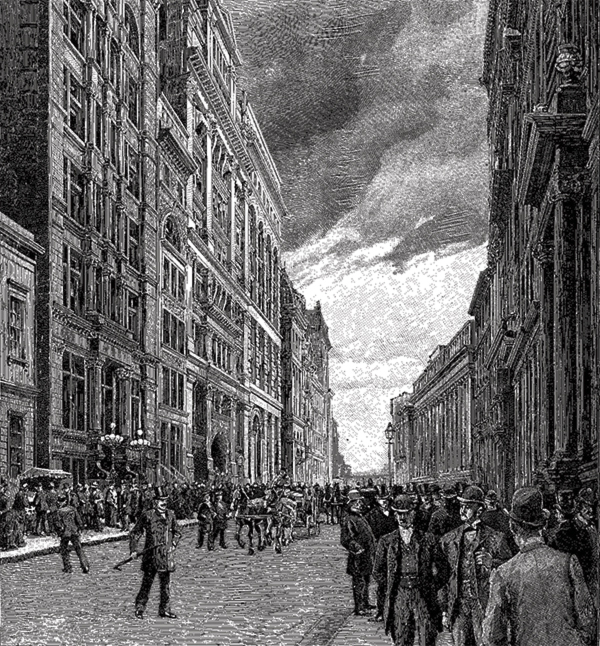From “The Next Panic,” which appeared in the May 1987 issue of Harper’s Magazine. The complete article—along with the magazine’s entire 174-year archive—is available online at harpers.org/archive.
Early this year, I began to notice a peculiar thing in the Brooklyn neighborhood where I live: gatherings, in small nervous knots, of my stockbroker and investment-banker neighbors. These were successful people in their forties and fifties who were making large sums of money. So were their firms. So were their clients. With the market swinging wildly but generally and dramatically up, profits were falling to my neighbors in a golden rain. Yet they whispered among themselves as if they were being followed by the police. They were in the middle of the biggest bull market in American history, and they were afraid.
Indeed, in the mid-Eighties, as the bull market took on a certain sinister aspect, these traders seemed to lose control of events. One didn’t have to look hard in the first months of 1987 to see that the roaring market was out of touch with economic reality; it was a market being artificially manipulated, and based increasingly on the exchange of meaningless pieces of paper. No market that behaved like that could sustain itself for very long, although its capacity for inflicting damage was immense. There were, after all, ample precedents, and my neighbors at least knew this: that under no circumstances must the events that led to the stock market crash of October 1929 be repeated.
A bull market is usually marked by the arrival of lay investors—members of the general public eager to cut themselves in on the action, although they traditionally play no great role in the occasional catastrophe except to serve as its principal victim. The great bull market of the Eighties, however, was marked from the very beginning by their presence, via profit-sharing plans, insurance companies, huge mutual and pension funds: the so-called institutional investors to whom the citizenry had entrusted much of its hard-won savings.

One might think that the presence of these institutions would act as a stabilizing force. After all, managers of funds, holding other people’s money, might be expected to let cooler heads prevail. Not so. The manager of a fund has a fiduciary obligation to obtain the highest possible return on the money entrusted to his keeping, so in an overheated market such as the one that began to build up in the mid-Eighties, the fiduciary obligations of the fund managers all but compelled them to speculate—and to speculate massively.
In turn, they devoted large sums to the purchase of junk bonds. And while a junk bond is sometimes likened to a share of common stock, it is nothing of the sort; when the line forms at bankruptcy’s soup kitchen, the holder of a junk bond will be served last, if at all. Junk bonds represent a major degradation in the quality of the nation’s credit, and such a degradation, my neighbors knew, was a sign of impending disaster.
There were other portents. News commentators were fervent on the subject of insider trading; editorials in the Times were thunderous; the SEC ordered one arbitrageur to disgorge $50 million in fines, and another pleaded guilty to felony charges. A measure of excitement always attended the spectacle of traders heading to the federal sneezer, where they would inevitably go on to perfect their tennis games in a few months’ light confinement. Meanwhile, more thoughtful students of catastrophe worried about the perilous link between wild speculation and debt. A stock market on the brink of a crash gives ample warning of its condition and probable fate. The great bull market of 1929 crashed not once but several times: crashed and recovered, crashed and recovered, crashed and did not recover. It was doubtful, in the fall of 1986, whether the country could absorb such a blow.
Or perhaps there would be no disaster. Perhaps the stock market would start making sense. Perhaps everything else would somehow fix itself, and perhaps a mandrake root would be got with child. But in the late winter of 1987, none of these things seemed likely to happen, and to my nervous neighbors, huddled under the curbside plane trees, it seemed impossible that the present situation could sustain itself much longer. A panic, among other things, is a discovery process. And in a panic, real money is the only money that counts.


